Methadone has long been a cornerstone of treatment for opioid use disorder, demonstrating its effectiveness as a lifesaving medication. However, it has also been treated as a one-size-fits-all level of care—a role it was never meant to fulfill.
When methadone maintenance treatment was first tested in 1964 by Drs. Vincent Dole and Marie Nyswander in New York City, the approach was groundbreaking, offering hope amid the heroin epidemic. By 1969, the first operational methadone clinic was established by Dr. Robert DuPont in Washington, D.C., cementing its place in addiction treatment.
Yet, in the six decades since the structure of methadone maintenance programs has seen little meaningful change. Methadone is still dispensed daily rather than prescribed, and patients are required to engage in a minimum of two hours of clinical contact per month and attend yearly psycho-educational groups. What counts as “clinical contact” remains loosely defined.
This rigid, program-based model persists, largely due to concerns about medication diversion. But those fears are unfounded. Modern dispensing systems are highly automated, ensuring accurate dosing and accountability. There is no evidence of widespread diversion of take-home doses. Despite these advancements, methadone treatment remains tethered to an outdated model focused more on compliance than on individual patient needs.
In contrast, the field of addiction medicine has evolved significantly. It has become a part of mainstream healthcare, grounded in evidence-based practices and individualized care. Today, clinicians use reliable tools for multidimensional assessments and measurement-based care, tailoring treatment intensity to the unique needs of each patient. No longer does “one size fits all.”
Yet methadone treatment remains the exception. By regulation and statute, patients who meet the criteria for methadone treatment are funneled into a separate pathway—a specialty system that enforces a programmatic approach, offering the same limited services to all patients regardless of their individual needs.
This separation is no longer justifiable. Methadone should be a tool—a critical component of addiction treatment—not a rigid level of care. Patients with opioid use disorder who can benefit from methadone should have access to it, but they should also receive care that is tailored to their specific needs. Locking everyone into two hours of monthly clinical contact, regardless of their circumstances, is the very definition of program-based care.
To be clear, this isn’t about resistance to change from providers or patients. The current system persists because regulations require it, perpetuating a separate and unequal track for methadone.
It’s time to change that. Methadone should be integrated into the broader continuum of care available to all patients with substance use disorders. This means allowing it to be both prescribed and dispensed as needed and reimbursed as a medication service. It also means requiring comprehensive, multidimensional assessments to match patients to the appropriate level of clinical care. Methadone treatment should align with the same standards of individualized care available to patients using other addiction pharmacotherapies.
This shift would fundamentally transform the way we approach opioid use disorder. It would honor the progress made in addiction medicine and ensure that methadone is used as it was always intended—as an effective tool within a flexible, patient-centered system of care. The system as it exists today was created decades ago. It can, and must, be remade.





